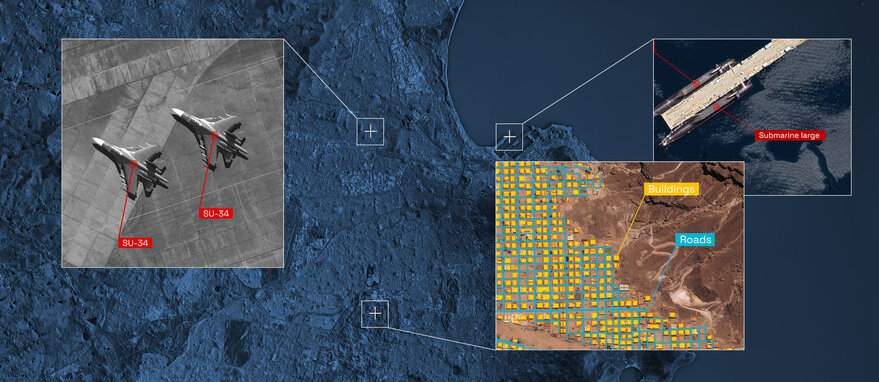SAN FRANCISCO – French startup Preligens is expanding its U.S. subsidiary in a bid to become a long-term supplier of geospatial data analysis software to the U.S. Department of Defense.
Since establishing a U.S. subsidiary about three years ago, Preligens has participated in the Defense Department’s Foreign Comparative Testing program, an effort to satisfy military requirements through products and services employed by U.S. allies.
“The objective for us, starting next year, is to scale the service,” Arnaud Guérin, Preligens co-founder and CEO, told SpaceNews during a visit to Washington. “We are growing our local engineering capabilities. The U.S. subsidiary, staffed with U.S. nationals, can provide service directly to the U.S. government.”
Preligens does not operate geospatial sensors or analyze geospatial data. The company supplies software that runs at each customer’s premises to fuse geospatial datasets and identify objects.
“We can offer software that that has been combat-proven,” Guérin said. “It has demonstrated its performance and security.”
Earlier this month, France’s General Directorate of Armaments awarded Preligens a seven-year contract with a potential value of 240 million euros ($237 million) for data-processing software. Preligens also supplies software to NATO and Japan’s Ministry of Defense.
Preligens was founded in 2016 by Guérin, an engineer who previously worked in the nuclear industry, and Renaud Allioux, a former Airbus Defence and Space remote sensing engineer. Because the company did not have access to imagery gathered by French military and intelligence satellites in its early days, Preligens built sensor-agnostic AI tools.
Preligens currently provides AI for optical sensor analysis in the United States.
“We are in the process of getting an export license for additional sources,” Guérin said. “The scope of the contract in France is slightly broader than what we are offering in the U.S. My goal in 2023 is to bring those capabilities to the U.S. government as well.”
Fusing geospatial datasets and identifying objects with AI is challenging. Satellites observe objects on the ground at different angles, with different resolutions, in different light and weather conditions.
“If you want to take advantage of all the strengths of those specific sources of data, you need to have a very detailed identification capability of the objects,” Guérin said.
